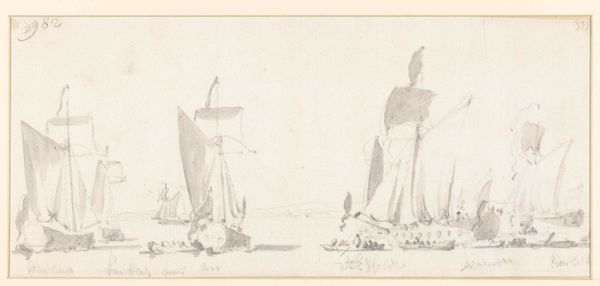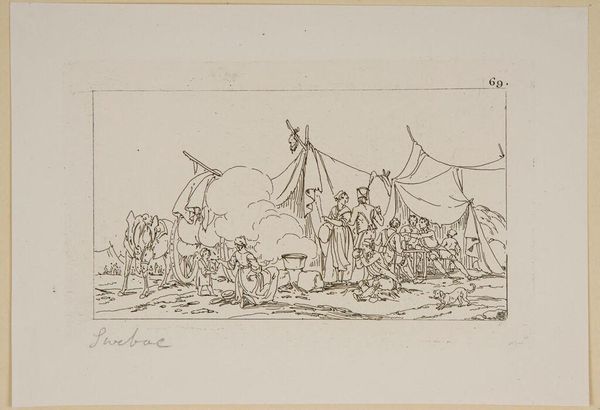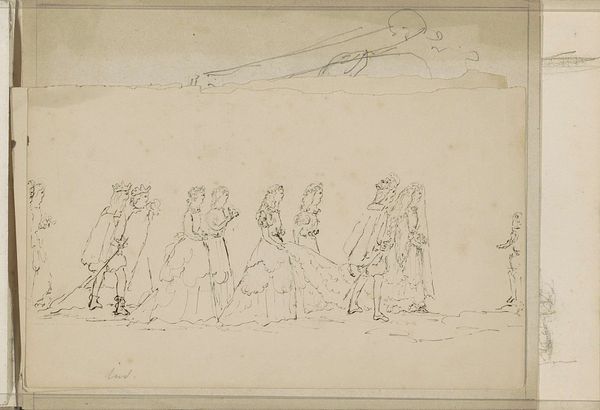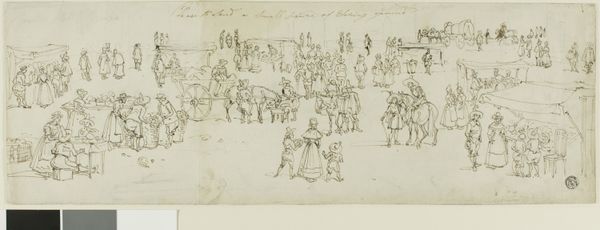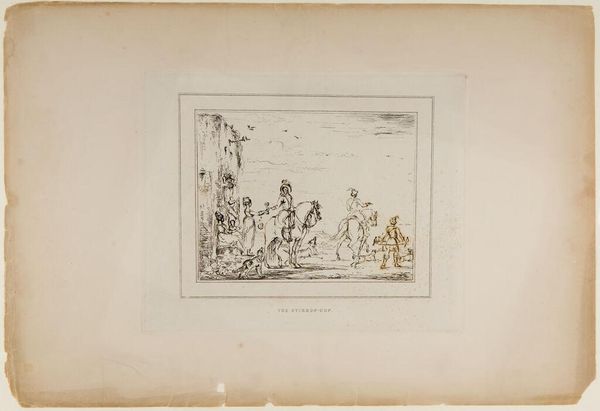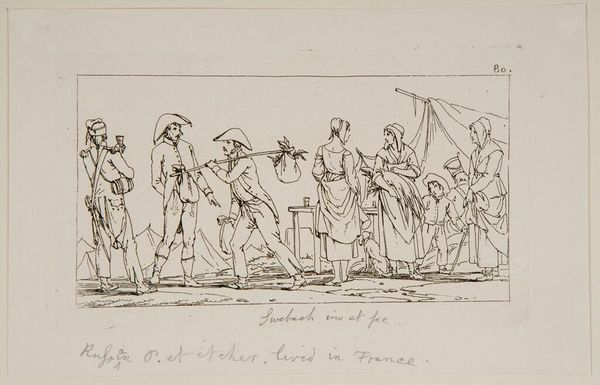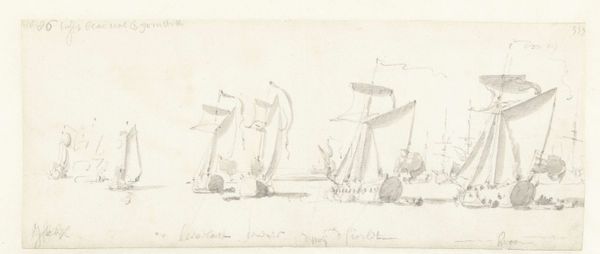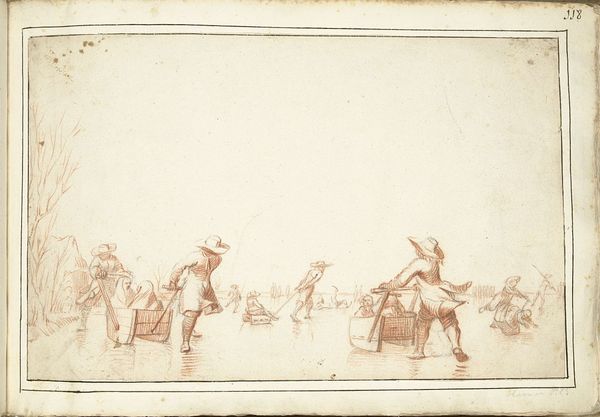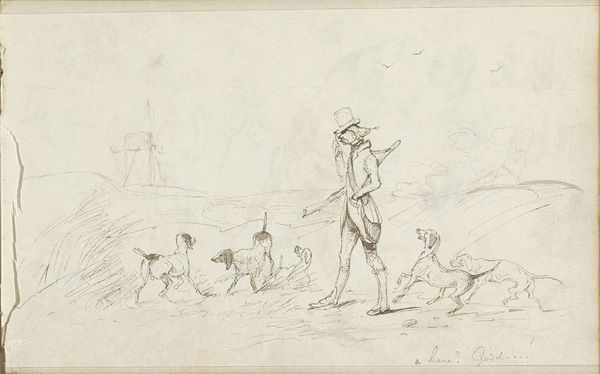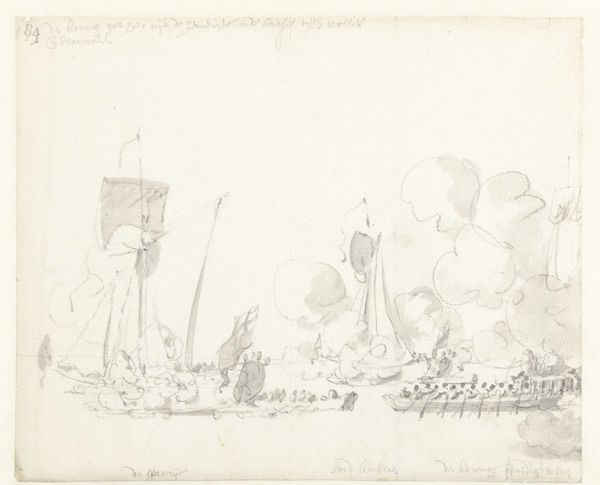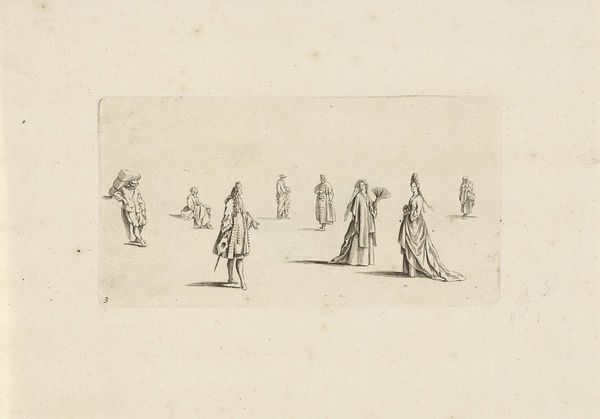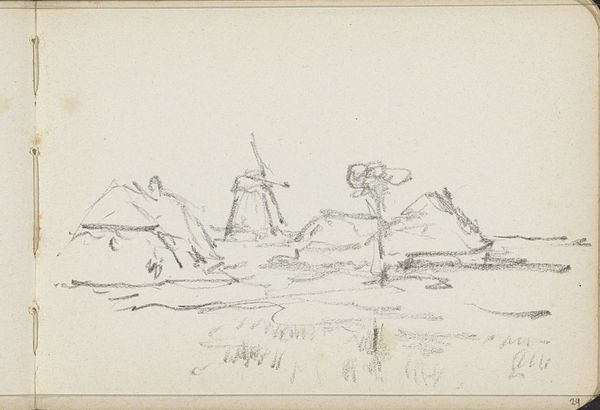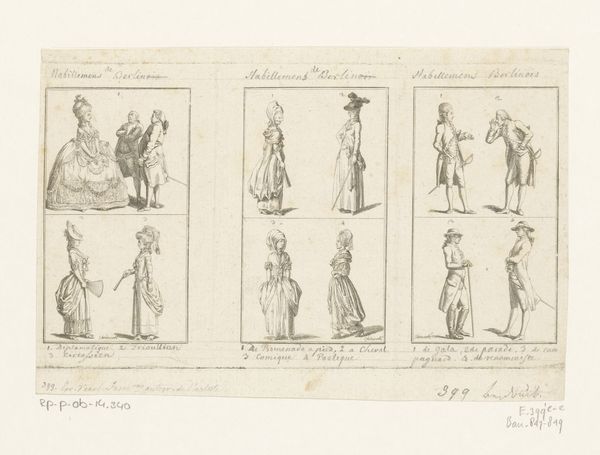
De tocht van de Engelse koning Karel II over de Thames naar Sheerness en Chatham op 27 Augustus 1681 Possibly 1681 - 1688
0:00
0:00
drawing, pencil
#
drawing
#
baroque
#
dutch-golden-age
#
landscape
#
river
#
pencil
#
history-painting
Dimensions: height 157 mm, width 375 mm
Copyright: Rijks Museum: Open Domain
Editor: Here we have Willem van de Velde I’s "The Journey of the English King Charles II on the Thames to Sheerness and Chatham on August 27, 1681," likely made between 1681 and 1688. It’s a pencil drawing, and the fleet of ships almost looks like a procession. What strikes you when you look at this piece? Curator: I see a fascinating choreography of power, Editor. Notice how each vessel isn't just a ship, but a carefully rendered emblem? Consider the symbolic weight of ships in the 17th century—vehicles of exploration, trade, and, of course, dominion. Editor: So, each ship functions almost like a signifier? Curator: Precisely. And look at their arrangement. The ships, bearing the king, aren’t merely traveling; they are performing a ritual, re-enacting narratives of royal authority on water. Can you sense the implied stories each ship carries, echoes of past voyages and naval encounters? Editor: I do. Knowing the history, I guess there’s tension here too. Charles II wasn't always popular, right? Curator: Indeed. And it's through art like this, created within specific social and political circumstances, that rulers like Charles II projected stability and power, manipulating their images and thus solidifying their position. Editor: It’s interesting to see how the artist uses fairly simple lines to communicate something so complex about power and image-making. I will never look at a naval picture in the same way again! Curator: Exactly! It shows how potent even a seemingly simple image can be. Art serves as a mirror to reflect societal aspirations and anxieties, leaving marks on collective cultural memory.
Comments
No comments
Be the first to comment and join the conversation on the ultimate creative platform.
